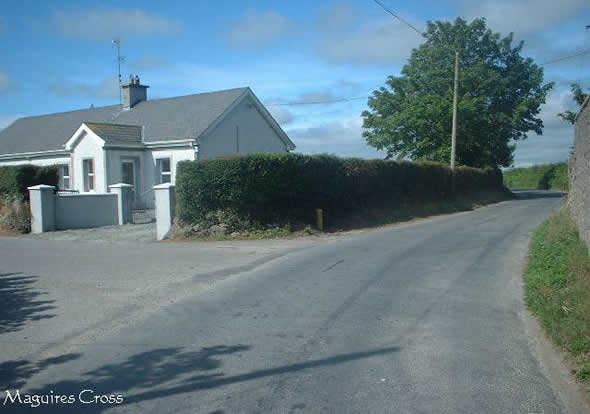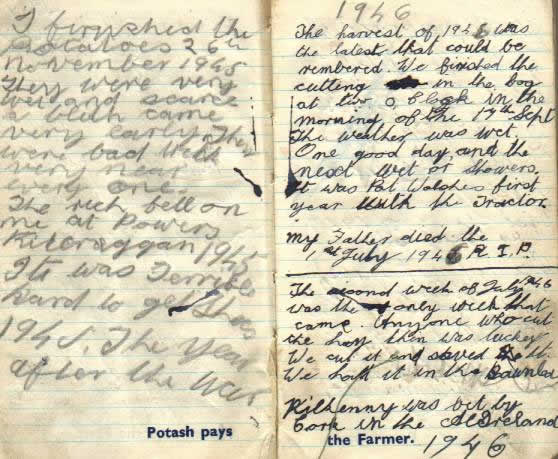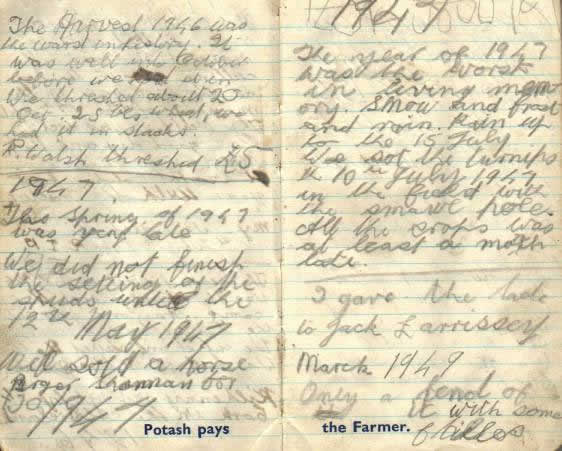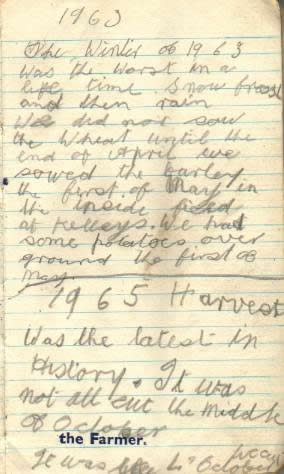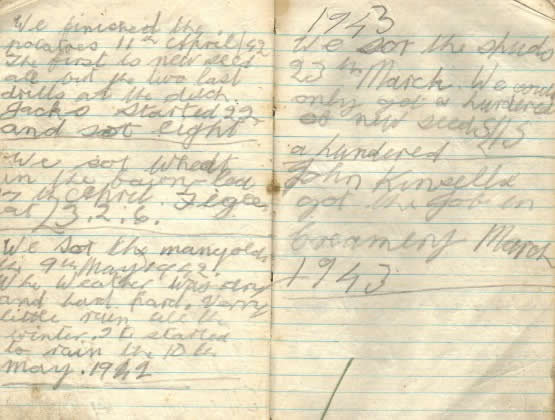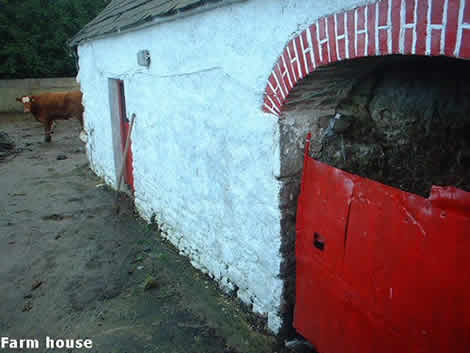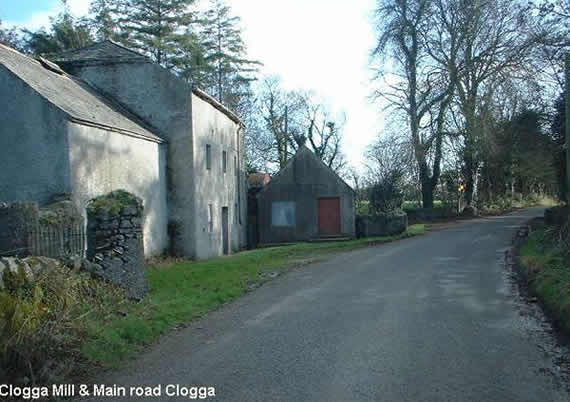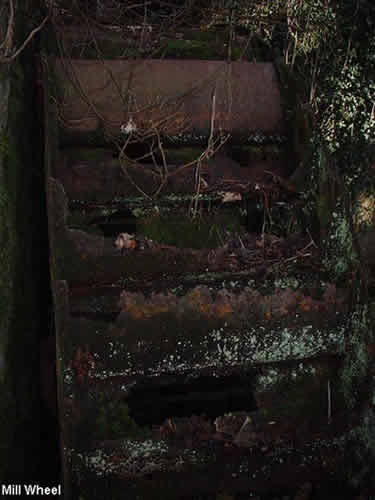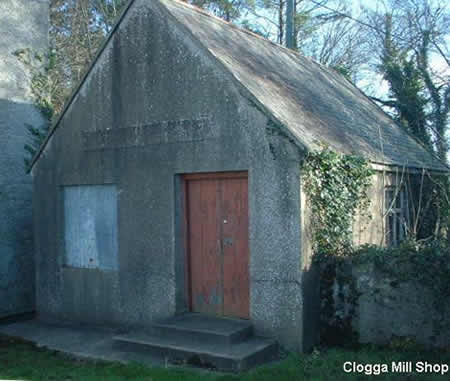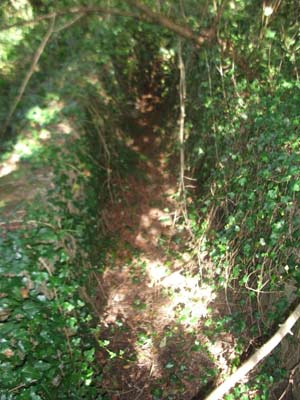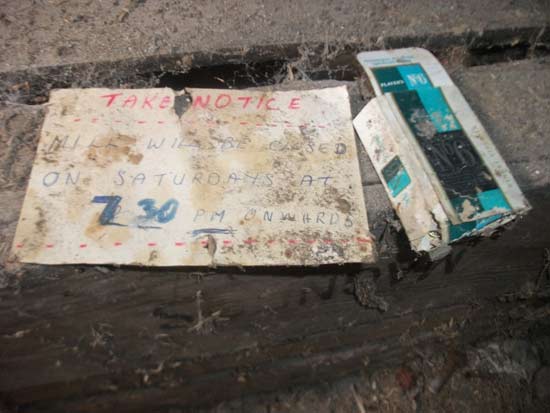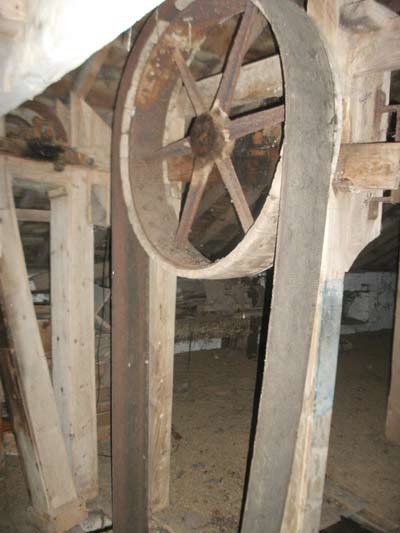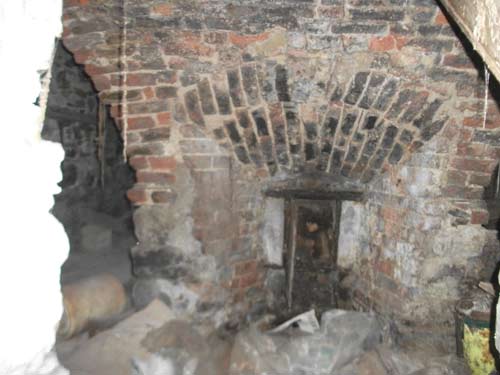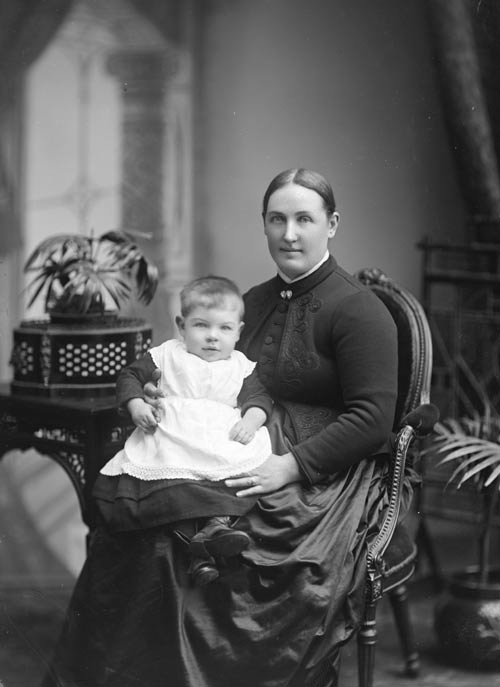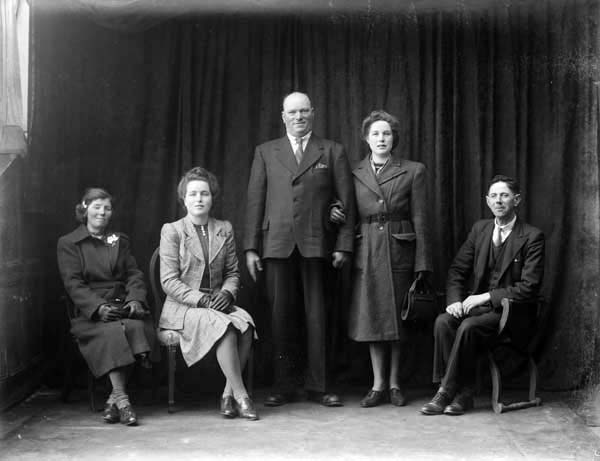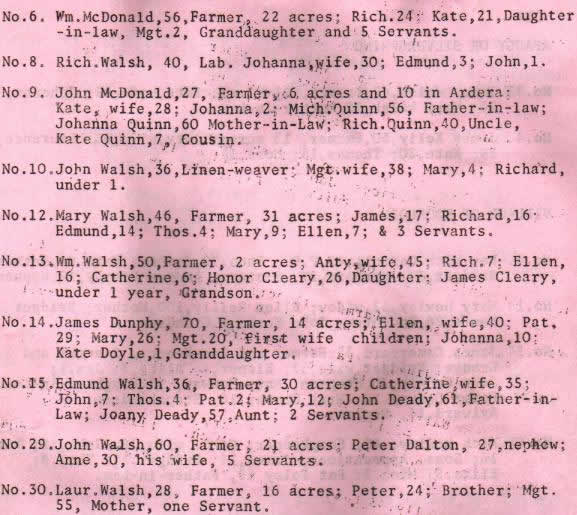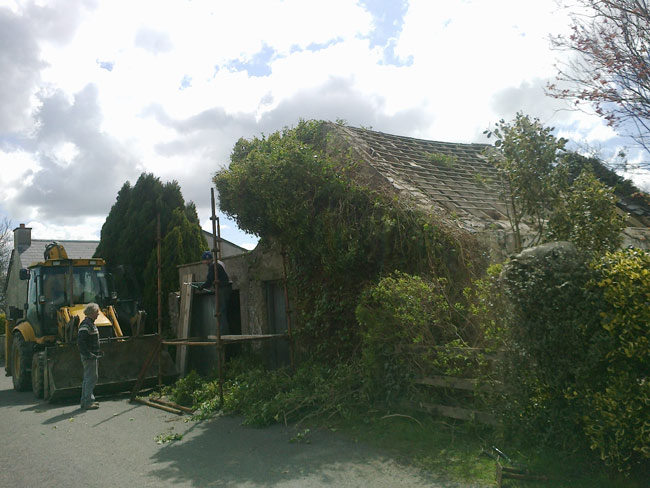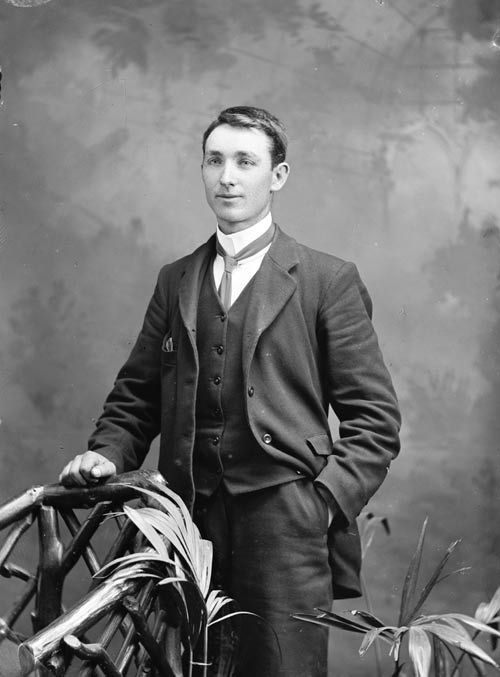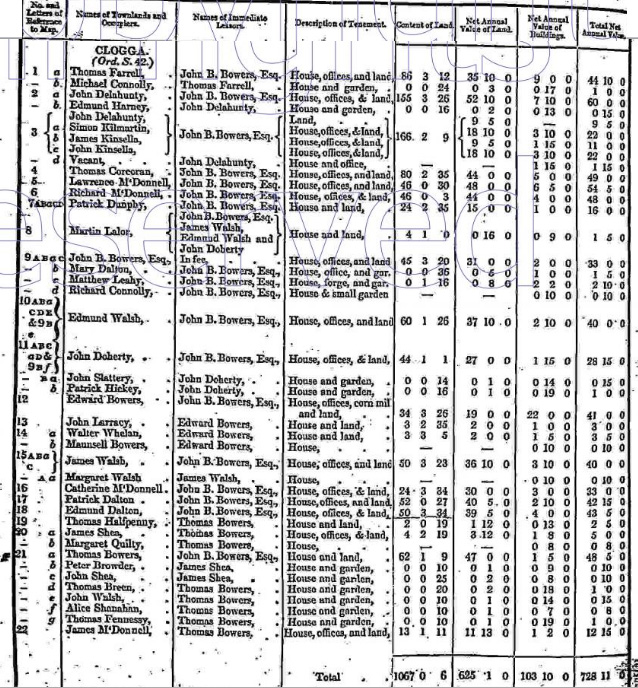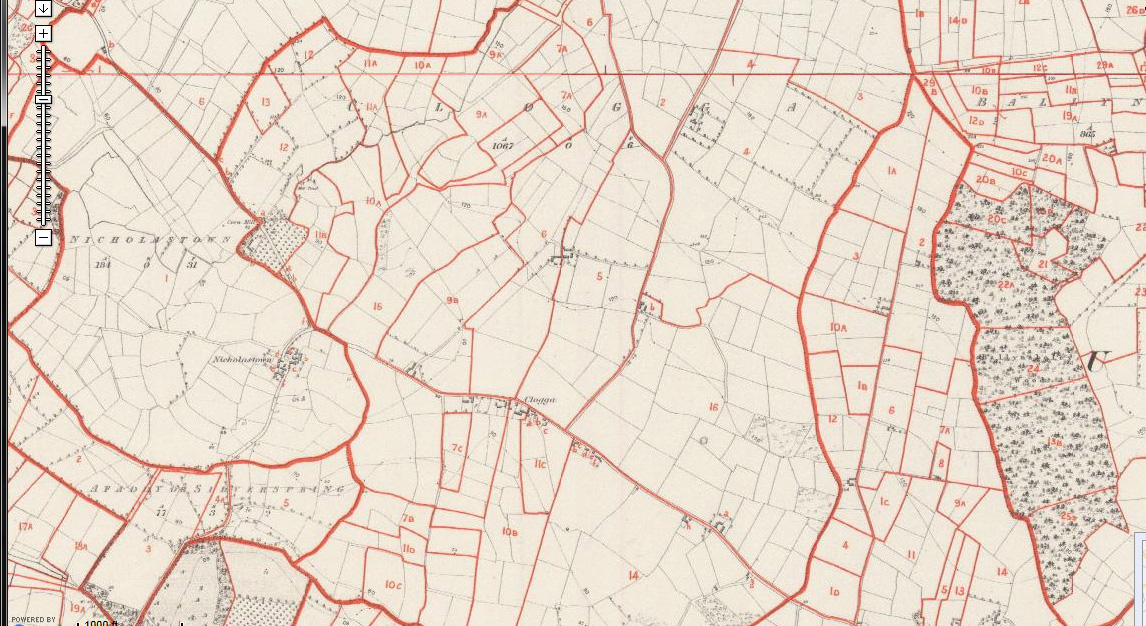Clogga Post Office
A post office was opened in Clogga in the second part of the 1800s. It was opened by a Samuel Reidy and was situated beside Larrisseys shop. The building structure is still there today and sits beside Kearns house.
To this day, the building is called 'Sams', which is a testament to Sam Reidy considering he died in 1912. His beloved wife, though she was some years younger, died just a few weeks before and its said Sam died of a broken heart. As they had no children, the post office was sold to Andrew Wall, the creamery manager in Clogga and the post office service moved to his house just a few yards up the road.
There is an unusual story about Sam. Because of the bad education system in Ireland at the time when he was born cir 1835, he was mostly illiterate. So Clogga had a postman that couldn't read! His wife, who sorted the letters in the post office, put different colour thread on each of the different letters to distinguish the different families e.g. a letter for the Larrissey family had a blue colour thread put on it etc. By 1911, Sam had picked up some reading skills, as on the census of that year he states that he cannot write but he can read. Over time he would have picked up on the structure and number of characters in peoples names.
As stated, around 1912, the post box was moved to the home of the Wall's were it ceased working decades later. It can be seen on the old map on the picture page. The post box still exists at the old home of the Wall's today.
|
'Sams' Post Office is demolished in 2013, over 100 years after Sam died in 1912 |
Back to Contents
Clogga Forge
The blacksmiths forge was run by the Kelly family up to the early 1940s, when Lawrence Kelly the blacksmith died suddenly. As his children were young, his wife did not continue to run the forge. The forge was situated at their home on the main road in Clogga near 'Kellys' cross.
Lawrence Kelly was from Inistioge originally and had inherited the forge from his boss, the previous blacksmith, James Walsh who died without any children.
Besides horse shoes, they also made other metal objects such as the
band used on cart wheels and different types of tools.
The remains of the forge are still in place today. There is a horse ring to tie horses and the original horse water trough, which was also
used to cool the metal, are still in place. Also, the mould for making the band on a cart wheel can still
be seen outside the forge.
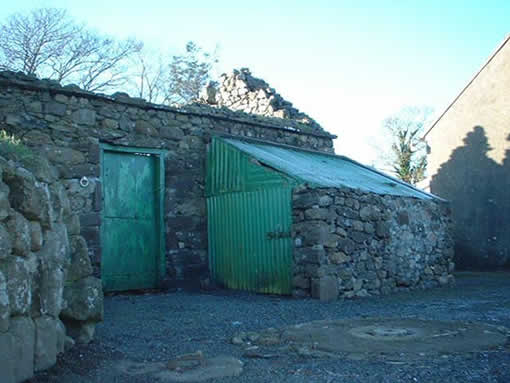
|
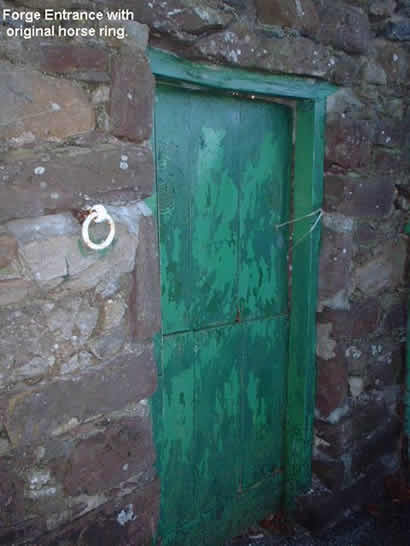
|

|
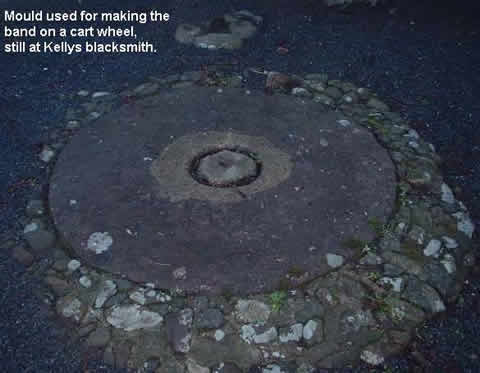 |
| Forge |
Forge entrance |
Water trough |
Band mould |
Back to Contents
One of the main focal points of the community in Clogga was Larrissey's
grocery shop. It was situated on the main road in Clogga near "Kelly's cross". It was where the Kearn's family currently live.
The shop was owned for a long time by Jack Larrissey (cir 1888-1966). It had been in the Larrissey family for generations (Jack inherited it from his father Richard). It sold a wide variety of food and also animal foodstuffs. Jack Larrissey himself, was said to have "a heart of gold" and often helped people in Clogga giving them lifts with his horse and cart. He also had a book policy, were people would get their food "on tick". This meant they would get their food and pay for it when they could afford it.
Jack Larrissey died in 1966. The shop was then inherited by the Doyle's. After that the shop was run by the Browner family for many years. It was then run by Peter Fennelly (brother of Kate Browner) for a short time (these where cousins of Jack's). In the early 1980's it was purchased by the Kearns who ran it until its closure in 1988. The shop was demolished in the early 1990s.
Also in the 20th century, a 'shop van' used to do the rounds of Clogga twice a week. Keatings van sold a mixture of foodstuffs , but also bought/traded eggs from the locals.
|
Jack Larrissey (1887-1966) of 'Larrisseys shop ' Clogga. Taken in 1910 (age 23). |
Back to Contents
The Tithes were a tax that was introduced in Ireland cir 1830 for people that had land of greater than 1 acre. This was a tax (tithe meaning 'one tenth') ,which forced the people to contribute to the established state church, which was the Protestant Church of Ireland church. Many opposed this, mainly because, in Kilkenny, cir 85% of the population was Catholic and did not appreciate having to contribute to another church. In hindsight it was not considered a great idea by the British government as it stoked aggression towards them (many of the new Church of Ireland churches built at the time were paid for with the Tithes, though the vast majority of the contributors would never enter the church because of their faith). Two people were killed in Carrigeen in October 1832 when police on horseback opened fire on a hostile crowd as they were in the process of erecting Tithe notices. The tithe tax was applied to people who had land (most people didn't own land outright - instead they usually leased it from a landlord - in Clogga's case the Bowers family). The amount paid depended on the size of the farm. These records called 'Tithe Apploment books' have survived. The entries for Clogga can be viewed by pressing on the image below. The head of the household for land owning (leasing) families in Clogga are named. Note; the Tithes and the Griffths Valuation are often referred to as census substitutes as they were not destroyed unlike other 19th century censuses.
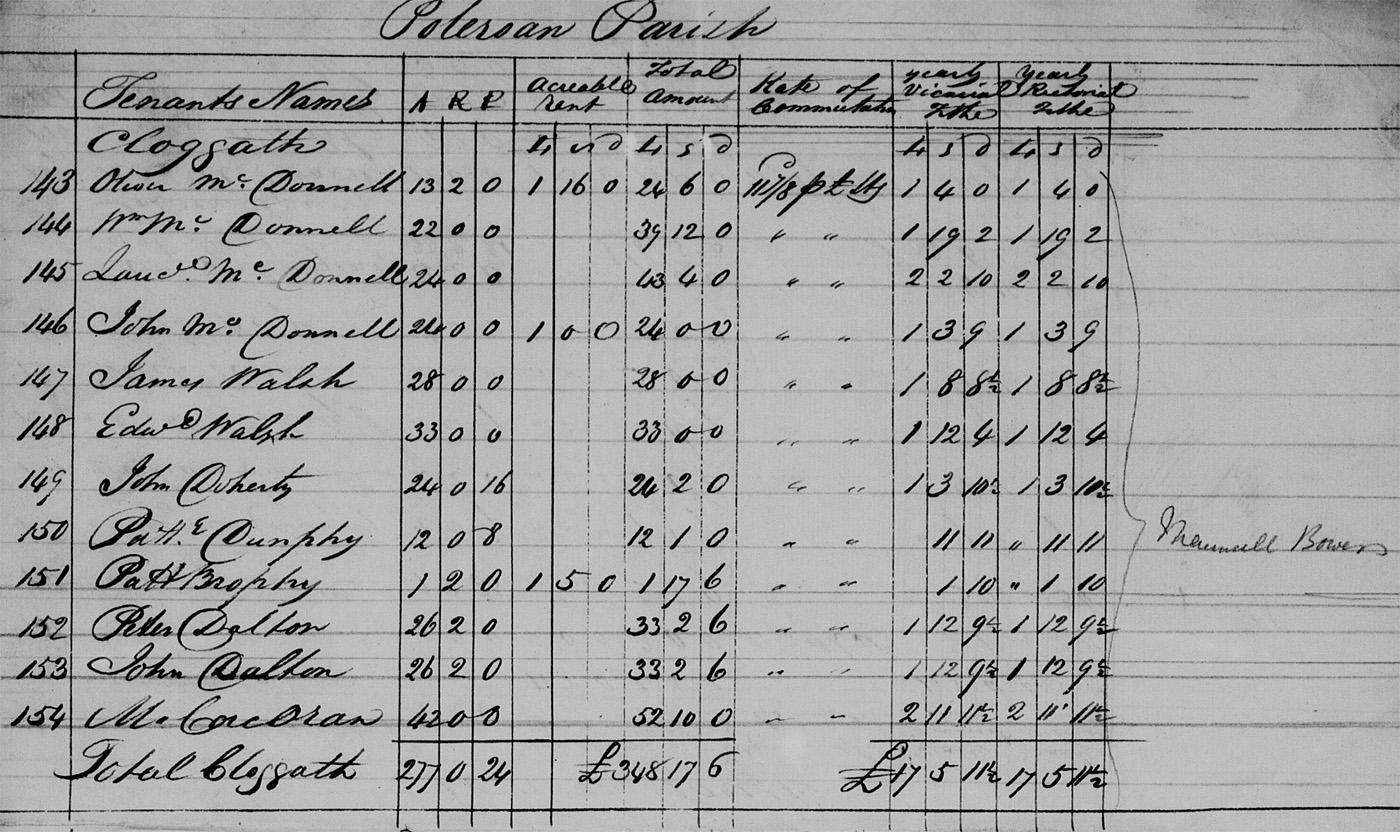
Back to Contents
Griffiths Valuation in Clogga -1850
Griffiths Valuation was a land survey taken for the whole of Ireland (a massive undertaking, considering the lack of technology. The surveyors didnt have the use of satellites or even airplanes so they literally had to measure, on the ground, every bit of Ireland - it took cir 15 years to fully complete but their results are so accurate they can be easily overlapped with today's satellite images - see ordnance survey ireland website). In Clogga, all the landowners were named and the land they owned highlighted on maps (no one in Clogga owned land outright at this time, all land was leased from the Bowers estate) . The quality of the land, buildings and net income of the land was also noted. A tax was then imposed depending on this information (a precursor to the current property tax!). The first thumbnail below is a copy of the original Valuation which lists all the landholders in Clogga with a number beside their name, along with other information. The second thumbnail is a map of Clogga from a few years after the valuation, the fields the farmers own are numbered, which corresponded to the numbers on the list in the first thumbnail. Note; on the listing 'lessor' is the name of the person the land is leased from, in most cases its the Bowers family. In 1876 the Bowers family is recorded as owning cir 2000 acres in the area - mostly Mooncoin and Piltown (much of their land was actually sub leased from the Earl of Bessborough in Kildalton in Piltown. The Earl, in 1876, is recorded as owning 24,000 acres in County Kilkenny). In some instances in Clogga, land is also subleased further e.g. Martin Lalor leases from Edmund Walsh, who in turn leases from John Bowers, who in turn leases from the Earl of Bessborough etc. Only a few years later this landlord system was deconstructed by the British government who actually forced the landlords (in this case the Bowers and Bessborough estates) to sell the land to their tenants. Most tenants couldn't afford this so the British government lent them the money to buy the land (which was paid back for many years afterwards). The most interesting aspect is that the size of farms in Clogga in 1850 are still quite similar to today. Another interesting point to note is that the New Line didn't exist at the time, instead there was a lane to access the fields near where Comerford's house is now, near the creamery cross. There was also another lane opposite Clogga school for access to the fields from the north.
|
|
1. Griffiths listing Clogga |
2. Corresponding Griffith Map of Clogga |
Back to Contents
Clogga Band
In the 1920s a Drum and Fife music band was formed in Clogga. It was made up of local men. They played at sporting events, charitable events, in pubs etc. and were very popular in the parish and surrounding parishs. They played traditional songs but also wrote their own material. Or sometimes they would change the lyrics of a traditional song and add in their own lines making reference to Clogga and its people.
Here is an extract from a hurling match report from 1927:
June 1927. At Ashgrove. School Hurling League-Cup Final. Kilmacow 2-3, Carrigeen 2-0. "Metz" was re-echoed to the sound of the much admired Drum and Fife Clogga Band, smart in their uniforms, under the baton of Staff Major Foley on their way to Ashgrove. The game was brilliant.
Clogga Drum and Fife Band mentioned in this newspaper article dated 24/june/1927;

Back to Contents
Old Newspaper Comments/Miscellaneous
Below are some extracts which are related to Clogga, from the 'Echoes from South Kilkenny' in the Munster Express newspaper. Topics varied from a new village pump in 1930 (this was located roughly where Quilty's house is at present) to one of the first planes to fly over the village!)
Civil War Activities |
Not happy with the Quality of the Roads |
Plane passes over Clogga |


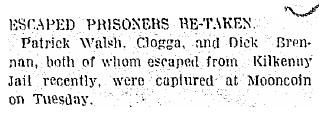
|
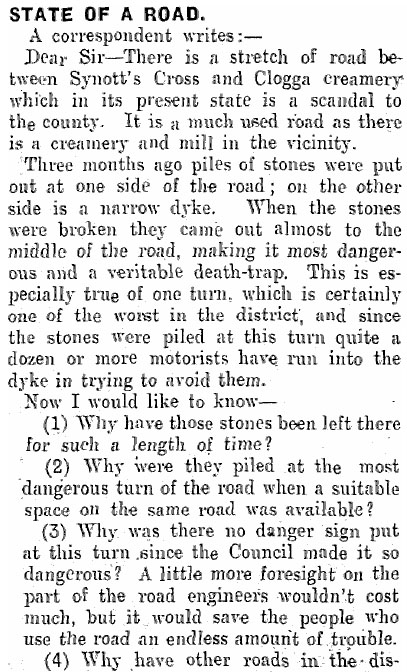 |
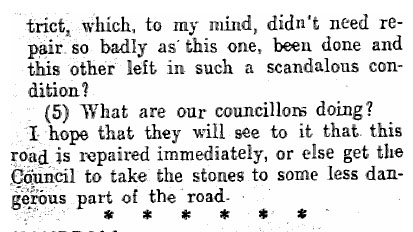

|
Sep 1922, Jan 1923 and May 1923 |
Oct 1930 |
|
Local Man in Court |
Local Man in Court (cont) |
New Village Water Pump |
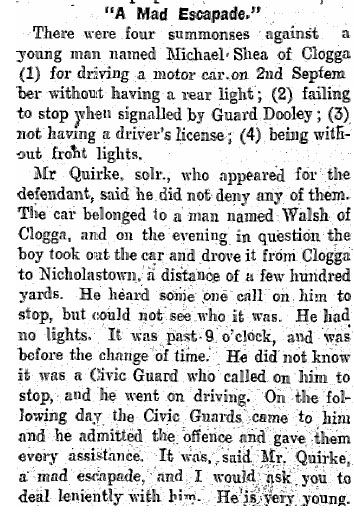 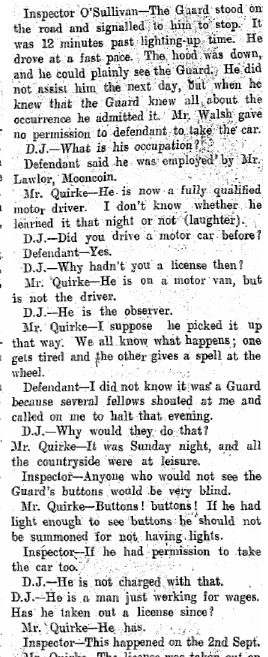 |

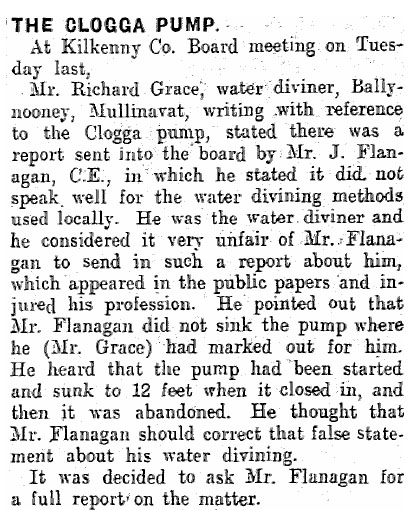
|
Oct 1928 |
April and May 1930 |

Back to Contents
Back to top

